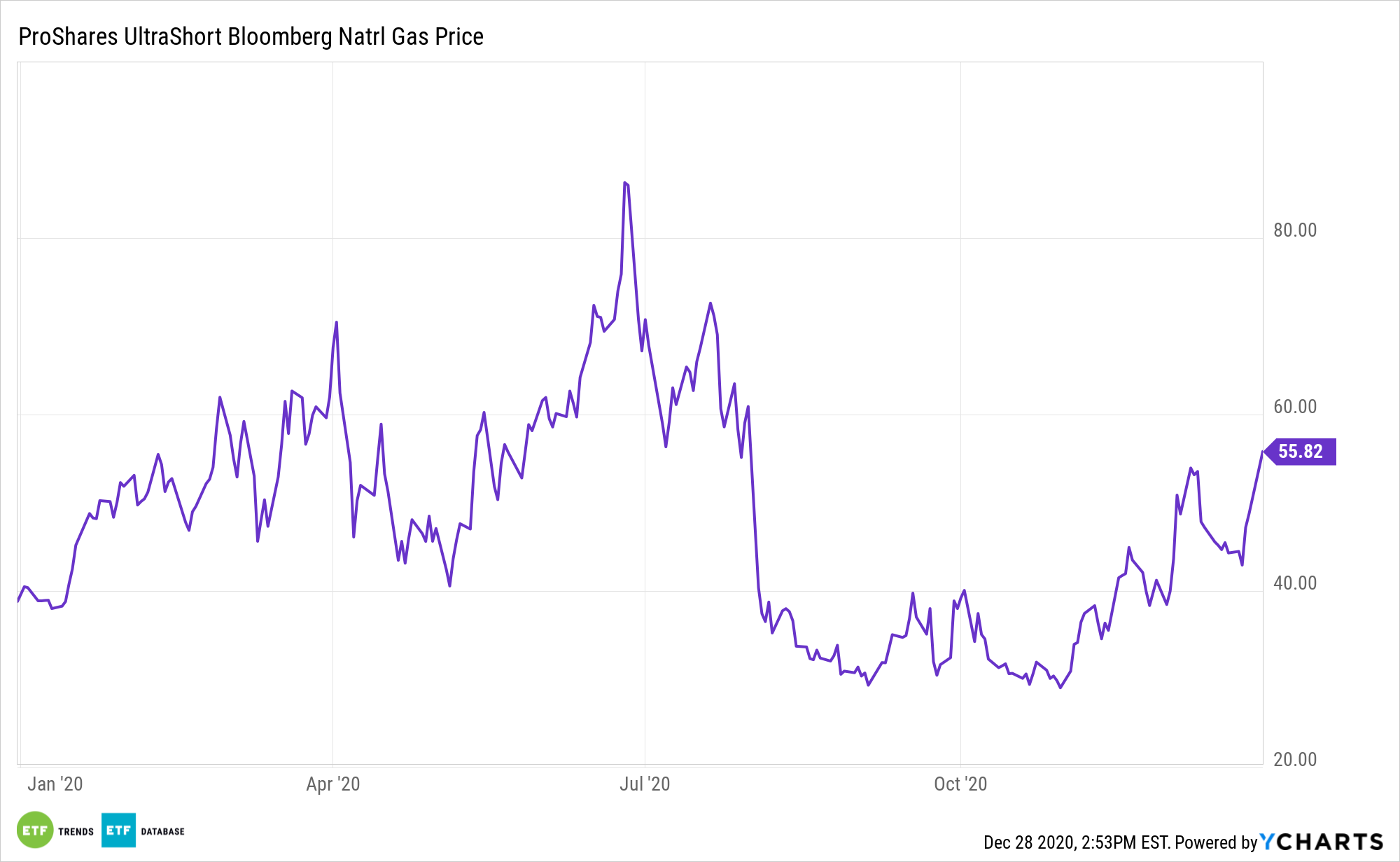Natural gas futures plunged Monday as warm weather ahead dashed bets of a winter cold spike.
On Monday, the United States Natural Gas Fund (NYSEArca: UNG) declined 8.7% while the Nymex natural gas futures decreased 8.6% to $2.3 per million British thermal units. Conversely, the ProShares UltraShort Bloomberg Natural Gas (NYSEArca: KOLD), which provides the daily inverse 2x or -200% performance of natural gas prices, jumped 16.4%.

Forecasters highlighted major warming trends from weather models over the holiday weekend, projecting mild temperatures well into January, Natural Gas Intelligence reports.
According to Bespoke Weather Services, weather models over the weekend revealed a stronger positive Eastern Pacific Oscillation and a weaker North Atlantic Oscillation (NAO), which indicated warmth ahead.
The changes “resulted in a massive decrease” in the firm’s forecasted gas-weighted degree days (GWDD), “as the next two weeks alone look to be 25-35 GWDD warmer, or roughly 60-70 Bcf,” Bespoke said. “Perhaps the back half of January can at least get back toward normal, but the first half now looks very solidly warm.”
The weaker natural prices in the meantime should “tighten balances once again, so if the blocking can ever finally at least back us away from the high-end warmth, there may be a good buying opportunity soon,” Bespoke added.
Maxar’s Weather Desk early Monday also predicted warmer-than-average temperatures across the eastern two thirds of the Lower 48 states from Jan. 7 through Jan. 11.
“The forecast is largely warmer when compared to expectations from late last week for this time frame,” Maxar said. “Much above normal temperatures are in the Midwest and East, while near normal readings are in the West.”
“Much and strong above normal temperatures are along the East Coast at the start of the period, along a storm system tracking through,” the forecaster added. “While temperatures cool in its wake, aboves look to be retained for most of the period here. Any below normal temperatures accompany high pressure in the South Central early, but more widespread above and much above normal coverage is gained across the Midcontinent and points eastward during the second half of the period.”
For more information on the natgas market, visit our natural gas category.
